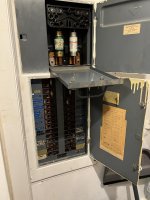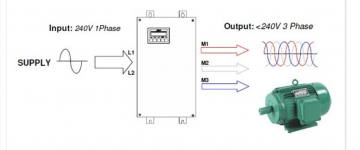The insteon sends signals along the powerline, similar to X10 technology, but one step more advanced. There is occasionally an issue with signals passing from Leg A to Leg B and and certain powerline boosters were sold to correct that problem, although in later years insteon began broadcasting an RF signal as well to boost the powerline and assure better A/B connectivity. It is not ethernet. Ethernet over COAX is MoCA technology, and I dont know of ethernet over powerline (but it could be possible, just not here).
I have read that VS pumps cause EMI noise that travels long distances over powerline, that the noise can be filtered out if you can identify the frequency, and that running high current 220V appliances can deaden the effect of the noise. I have suspected this is my problem for years and tried various filters, never with great success.
Having said all that, my voltage in the basement on the lights I tested was too low. I need to investigate more which I will do today and/or tomorrow and report back. Thanks to all who are contributing.



